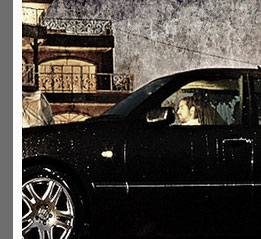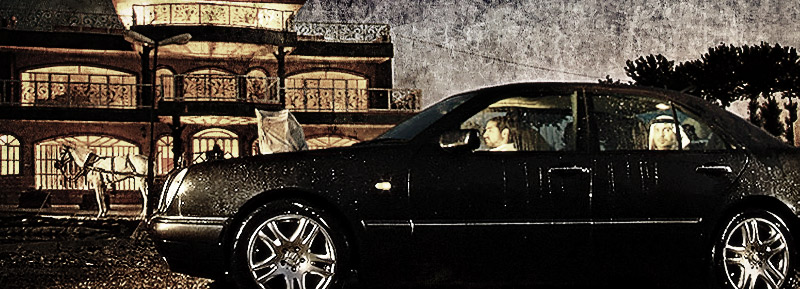::: Video Clips

Faroughi holds the view that the video clip is an opportunity for pictorial reconstruction of an ancient tradition deeply rooted in Eastern narrative; a narrative which is characterized by being extremely laconic, mysterious and symbolic with symbols that extend the scope of concepts to archetypes.
The video clip is an arena for utilizing novelty and amazement at their utmost level. It is the site of creating and experiencing modern forms of visual narrative; a site for creating pure atmospheres and fulfilling the possibility of creating music and rhythm in the composition, mise en scène, and the arrangement of video images.
According to Ramin Faroughi, the video clip is the cinematic equivalent for a concise form of Persian poetry known as dow-beiti or ruba’ee [=quatrain]. On the other hand, one may have moments in a video clip like the reconstruction of Japanese haikus.
Faroughi and his friends were the pioneers of designing and producing video clips in Iran in the early 90s. During the past decade he has directed numerous video clips, which are considered among the most creditable works in the field of video clip production in Iran.
The Tearful
The Tearful was the first video clip production order for Ramin Faroughi. It was an effort to depict a poetic and symbolic expression of public religious mourning, with disunion and yearning being the subject matter. In this clip, Faroughi has made dramatic use of ancient symbols and signs that exist in symbolic elements.
The Caravan
The Caravan is the story of a youngster who, in a journey between reality and dream, realizes himself as a hero thrown into the battlefield. The general milieu of this clip is built up by looking at the image of war from the viewpoint of an ambitious young fellow with feelings that have made him fond of self-sacrifice and devotion.This clip is made on a ballad sung by the well-famed Iranian singer Shahram Nazeri.
Navaa’ee
The concept of disunion and reunion holds a special stance in Iranian mystic poetry and music.Navaa’ee poetry and music, from Khorasan region in Iran, is an outstanding example.
This video clip follows the concepts of separation and reunion with a symbolic and poetic tone in several parallel adventures. A man and a woman spend their life in longing and yearning separated from the child that they’ve never had. The man goes out dancing to the sound of music and in search of perfection, in search of a lost one. Separated from her husband, the woman weaves a carpet in the hope that he would return. The thirsty land needs rain and in the end, after efforts and search, the man reaches the lost caravan. He touches the light in a translucent litter. It rains and the couple sitting on a carpet celebrate the birth of their newborn and tour the heavens.
The director of this clip says that he likes this work more than his other video clips and he explains this preference this way, “I like this one because it did not have an ordered content and I chose everything in the clip and defined it the way I preferred it to be. Nevertheless it took me over a year to finish it and I finally managed to obtain the screening permit, but not before having some partscensored and modified.”
Paradise Piece
This is the story of the loneliness of a little flower vending girl in Lahore, Pakistan. By falling in a childlike love with a little boy who sells incense sticks in the cemetery, she goes aflying, as does a parrot having just escaped from captivity.
Leprosy
Leprosy is a video clip that tells of the perseverance of single women in the context of traditional societies, which according to the clip’s director, “have little to see, but lots to hear”. In traditional societies, it has always been this way for women; victoms who have to be punished for uncommitted sins and let their backs bend under the burden of people’s gossips, unless they are audacious and eager to fight and take back their lives.
STORY IN BRIEF: The sea is sulking and angry at the fisherman. The young fisherman, who has just married his beloved girl, hears the whispers that his bride carries bad omen. Bent under the burden of people’s gossips, he ends up seeking solace in narcotics. His addiction and people’s erroneous belief eat up bits and pieces of their life like leprosy. Consequently, the woman delivers her husband from the leprosy of addiction and drags him back to life after a lengthy continuous battle.
Dust and the Mirror
Life is replete with ups and downs. Sometimes a mistake tarnishes the mirror of life like dust. Then there must be someone to help wash away the dirt from the face of the mirror. Women do the same in a symbolic and mythical milieu to save their men. At times life shatters the mirror to multiply the reflected image for someone who is eager to see.
Nocturnal
Addiction arrives to fill up empty spaces but it takes away everything and leaves nothing but empty spaces. Iran is located in the transit route of drug trafficking from Afghanistan to Europe. Narcotics is the world’s dirtiest but most profitable business. Every year, a great part of the investment that can be spent for development is used to prevent destruction, a destruction which is well underway.
Plains and Ventilation Towers
Persian literature abounds with moral parables some of which have found their way to school textbooks and some have been recounted in different ways as verses by great poets. One of the most famous of these which is featured in this clip is the story of three brothers who hear from their dying father that there is a hidden treasure trove in a barren land belonging to their family. To dig up the treasure, they comb each and every piece of the land. But finally they realize that the real treasure is work and effort that fertilizes their land and in fact their life.
The Day It’s Not
This clip was an order placed by the National Iranian Oil Company (NIOC). Initially, this video clip was supposed to ask people to economize on energy consumption, but in this modern clip the issue gains a wider scope, so that its producer could love it and narrate it in his own way.
Now The Day It’s Not tells us, “If we do not appreciate our haves and don’t hold them dear, life will turn its back on us and everything will come to a halt and the journey of life will cease from proceeding.”
The Day It’s Not has made use of the traditional zaar ritual in Iran’s southern harbor regions in the Persian Gulf coastlines. This ritual is a sort of exorcism performed for those whose bodies are taken by the evil spirit that has driven them crazy.
Roya Nownahali, a famous Iranian actress with a style of her own, has starred as both the traditional and the modern woman in this clip. The poem in this clip is written by Ramin Faroughi.
O Brother
O Brother was produced to an order by Ahmad Bu-Khatir, the well-famed singer from the UAE, a singer with a style of his own who all by himself acts instead of all musical elements in the clip. In his style of music, there is no musical instrument and all musical atmospheres are created by his own voice. This clip is made in Esfahan, Iran’s cultural capital, which is a historical and legendary city. O Brother is the story of a human who rediscovers his totally forgotten conscience and unites with it in order to be able to purge himself in the symbolic river of human civilization.
Like Fireflies
This clip is the story of a father who has lost his son long ago in the war. After many years, in a cold and long winter, the father sees his son from behind the window and starts following him until he arrives in a forgetful city that has clean forgotten that its streets and alleys are named after the young soldiers who, many years before, had sacrificed their lives in the war. Like Fireflies makes an effort to say the name of each human is reminiscent of a life, and not just a sign, a number or a statistic.
Say Tehran
Tehran, the Iranian capital, is one of the largest and most populated cities in the world, with a history and geography of its own. It is a city whose vices have camouflaged its beauties. Everybody complains about Tehran. In this video clip, the poem of which is written by Ramin Faroughi, Tehran complains why its residents don’t appreciate it; this city which still has its beauties. Say Tehran is made to an order by Tehran Municipality’s Department of Culture and Arts.










